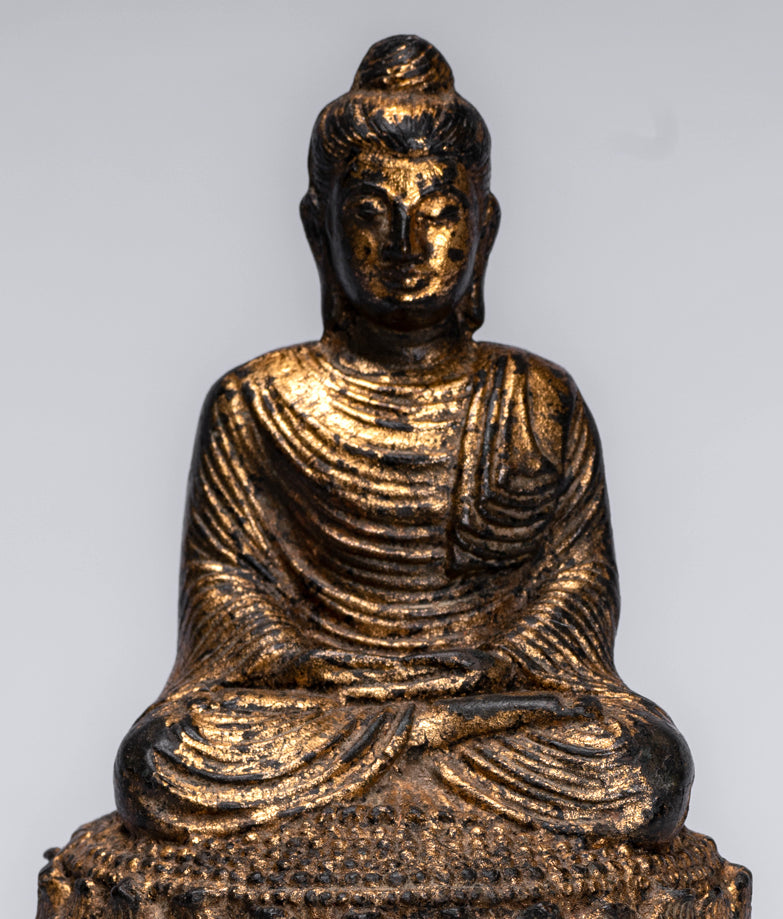
Which Buddha statue is best for my home?
By Amy Underdown, London, UK
When the Buddha reached enlightenment, his main goal became to teach others so that they could follow in his footsteps. Travelling through the Ganges Plain, he taught his sermons to all sorts of people from different classes and walks of life, from cannibals and criminals all the way through to the highest of society. In fact, the Buddha himself said that the best way to remember and respect him was through his teachings.
With Buddhism now spread over the whole world and with temples not accessible to all, the best way to learn and understand the Buddha and his Four Truths is to bring a statue into the home. Having a statue or icon of the Buddha can help encourage a meditative state whilst bringing different energies into your space. But the question remains, which Buddha statue is the best for your home? Here we will dive into the different types of Buddha statue so that you can find which one suits you best.
Teaching Buddha
The Teaching Buddha depicts the Buddha’s first sermon following his enlightenment, delivered to a group of initially disinterested disciples. It was in this moment that the foundational Four Noble Truths were first presented. This type of statue is therefore ideal for anybody who wishes to focus on their spirituality.
Laughing Buddha
The Laughing Buddha is a widely recognised art form, though few know that this actually depicts Budai, a Chinese Monk from the 10th century ACE. With his head thrown back in joy, the Laughing Buddha is said to bring happiness and prosperity, which is brought about when you rub his abundant belly.
Meditation Buddha
The Meditation Buddha does exactly what it says on the tin. By bringing a Meditation Buddha into your home, you will be seeking to encourage a space of peace and tranquillity. In this position, the Buddha’s hands form a triangle, which represents the unity of the triple gem: the Buddha, Dharma and the Sangha, as well as holding a mystic fire within.
Reclining Buddha
The Reclining Buddha (which, as the name suggests, depicts the Buddha lying down), is said to represent the Buddha in his last few earthly hours prior to his entry into Nirvana. This state is called ‘paranirvana’, a condition reserved only for enlightened beings at the end of their life. This representation of the Buddha in his final earthly moments should encourage a strive for harmony within the self.
Medicine Buddha
If you are seeking good health and wellbeing, the Medicine Buddha is said to bring this type of energy into the home. This depiction of Buddha often sees him holding the stem of a healing plant and a bowl of medicinal herbs, as well as giving a general blessing to humankind.
Calling the Earth to Witness Buddha
The Calling the Earth to Witness Buddha, also called the Earth Touching Buddha, portrays the Buddha on the cusp of Enlightenment. It relays the moment in which Siddhartha Gautama used meditation to overcome the demon Mara and summoned the earth goddess to be the witness to his eventual enlightenment. This statue is perfect to bring into the home in order to stay focused on being at peace and staying at one with Buddhism’s end goals.
Contemplation Buddha
The Contemplation Buddha can be seen both sitting and standing. It is said to create a sense of contained confidence and is intended to symbolise determination, humility and tolerance, especially for those seeking to heighten their spiritual resolve.
Walking Buddha
The least common of the positions and almost exclusive to Thailand, the Walking Buddha is rare in that it shows the Buddha in physical motion. This statue encourages the recognition of internal beauty and grace as opposed to material goods.
Standing Buddha
The most common standing Buddha poses are the gift-giving (Varada) and protection (Abhava) Buddhas. The standing Buddha is thus intended to encourage generosity and fearlessness.
The poses of the Buddha are therefore critical to what kind of influences and encouragements you wish to cultivate in your home. It is a deeply personal choice about which sentiment you most strongly resonate with and therefore want to bring into your own space. Ultimately, any depiction of the Buddha will help nurture a sense of positivity and help you strive for true meditation, but this should offer a simple guide as to which statue will help you get closer to your Buddhist goals.





































